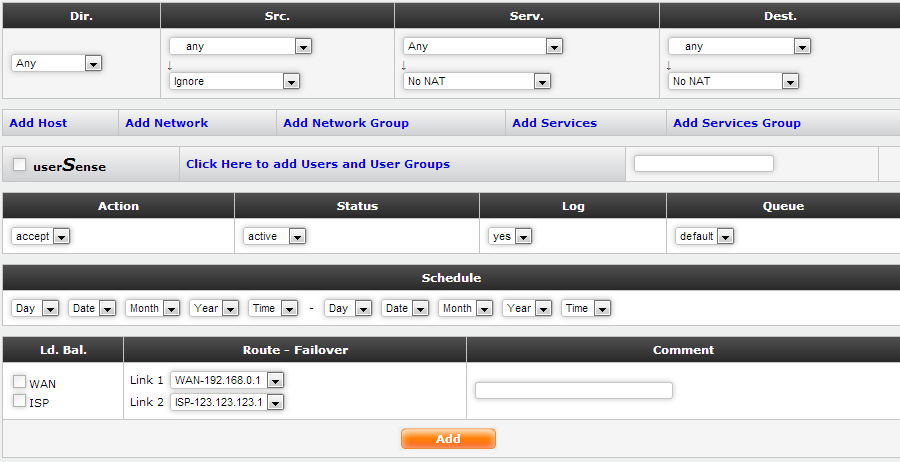Add Rules
Create Firewall Rules by adding the direction of the packet, Source of the packet, whether Source is to be netted, Destination, whether destination is to be netted, action for that rule, whether the rule is active or inactive, whether it should be logged, should it be assigned any bandwidth queue. The firewall matches policies by searching for a match starting at the top of the policy list and moving down until it finds the first match. You must arrange policies in the policy list from more specific to more general.

Add Rules
For example, the default policy is a very general policy because it matches all connection attempts. When you create exceptions to that policy, you must add them to the policy list above the default policy. No policy below the default policy will ever be matched.
Direction : Signifies the direction that the packet would take
Source IP : IP Address of Host or Network from where the packet would originate
Service : Used to set the protocol that is used for the creating rule. Usually it is TCP or UDP, but other options are provided for creating new services.
Destination : IP address of the Destination Server or Network
userSense : By clicking on this you would enable userSense for this rule. Once enabled you would be able to add Users or UserGroups that will be matched with this rule.
Action : Define what action to be taken if the rule is matched
Status : Whether the rule should be active or inactive
Log : Whether to log the packets which is related to this rule
Queue : Define if the rule needs to be assigned to any bandwidth queue
Schedule : Define the schedule to be applied for this rule. It can be 'From Day and/or Date and/or Time' to 'End Day and/or Date and/or Time'
Load Balanced : Traffic of this rules is to be load balanced between ISP's ( note: For future Use)
Route Failover : Use this option to route the packets of the rule through particular ISP
Comment : A text-field used to assign a helpful message describing the rule.
|